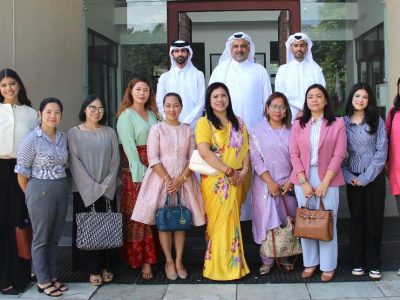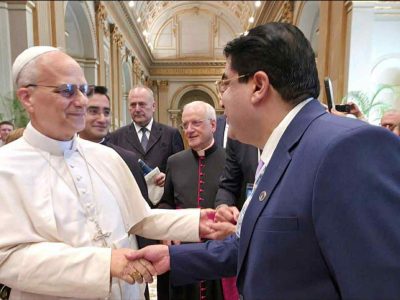A Way to See Life- Life as an Individual and Collective Story

The inquiry into the nature of life is an intricate and multifaceted exploration that traverses diverse realms of human understanding. Delving into this profound question involves the integration of perspectives from philosophy, science, religion, and individual belief systems. Philosophically, scholars grapple with existential inquiries about the purpose and meaning of life, contemplating the essence of human existence. Scientifically, the study of life encompasses fields such as biology and biochemistry, unraveling the complexities of living organisms at the molecular and cellular levels. Religious perspectives contribute spiritual dimensions, offering diverse interpretations of the origin and purpose of life, often framing it within the context of a higher power or cosmic design. On a personal level, individuals develop their own beliefs and philosophies, shaping their perceptions of life based on experiences, values, and cultural influences. The question of what life is, therefore, unfolds as a rich tapestry woven from the threads of various disciplines and personal convictions, reflecting the profound and elusive nature of this age-old inquiry. Elaborating on this topic involves exploring the different dimensions of the concept.
Biological Perspective: From a biological standpoint, life is characterized by specific attributes such as growth, reproduction, adaptation, response to stimuli, and the ability to undergo metabolism. Living organisms exhibit these characteristics, which distinguish them from non-living organisms.
Philosophical Perspective: The nature of life has been a subject of contemplation for centuries. Philosophers explore questions about the purpose and meaning of life as well as the ethical implications of human existence.
Spiritual and religious perspectives: Many religious and spiritual traditions provide interpretations of life. Some believe in the presence of a divine force or purpose that guides and defines life, whereas others view life as a journey toward spiritual enlightenment.
Psychological Perspective: Psychologically, life can be seen as a series of experiences and milestones that contribute to the development of an individual’s identity and consciousness. Emotions, relationships, and personal growth are the key aspects of this perspective.
Scientific perspective: Life is often studied in the context of biology, chemistry, and physics. The origin of life on Earth and the search for extra-terrestrial life are topics explored within the scientific community.
Existential Perspective: Existential philosophy delves into questions about individual existence and the subjective experience of life. Thinkers such as Jean-Paul Sartre and Albert Camus have explored themes of freedom, choice, and the inherent challenges of being alive.
Cultural and societal perspectives: Different cultures and societies contribute to an understanding of life through their values, traditions, and norms. This perspective includes how individuals navigate societal structures and contribute to collective experience.
The concept of life is multifaceted and can be explored from various perspectives, each offering a unique insight into the nature and meaning of existence. Different individuals and disciplines may provide diverse perspectives and contribute to a richer understanding of being alive.
A way to see the life- life as an individual and collective story
The notion of life as both an individual and collective story involves examining the unique narratives that shape our personal experiences and the shared stories that bind communities and societies together.
Life as an Individual Story
Personal Narrative: Each person’s life is a unique story, marked by a sequence of events, experiences, and choices. This narrative includes individual achievements, challenges, relationships, and personal growth.
Identity Formation: Life as an individual story contributes to the formation of one’s identity. The way we perceive ourselves and our values, beliefs, and aspirations are woven into the fabric of our narrative.
Chapters and Transitions: Life unfolds in chapters, marked by significant milestones and transitions. These include educational achievements, career changes, relationships, and moments of self-discovery. Each chapter adds depth and complexity to the story.
Character Development: Just as characters in a story undergo development and transformation, individuals evolve over time. Life experiences shape character, foster resilience, empathy, and a deeper understanding of oneself.
Autobiographical Memory: Memories play a crucial role in constructing an individual story. The manner in which we remember and interpret past events influences our present perspectives and future decisions.
Life as a Collective Story.
Shared Histories: Societies and communities have their own collective stories, often rooted in shared histories, cultural heritage, and common experiences. These narratives help build a sense of belonging and a shared identity.
Cultural Narratives: Cultural narratives shape a community’s collective story. These include traditions, rituals, folklore, and values that have been passed down through generations. They contribute to the cohesion and continuity of society.
Social Institutions: Institutions, such as family, education, religion, and governance, are integral to the collective story. They provide frameworks and structures that guide individuals within society and contribute to the overall narrative.
Social Movements and Change: Collective stories are dynamic and responsive to societal changes. Social movements, revolutions, and shifts in cultural norms have contributed to the ongoing evolution of collective narratives.
Interconnected Lives: Individual stories are interwoven within the larger tapestry of the collective narrative. Individuals’ choices and actions can impact the broader community, influencing social dynamics and cultural shifts.
Interplay Between Individual and Collective Stories
Reciprocal Influence: Individual and collective stories are not separate entities; they influence each other. Personal experiences contribute to collective narrative, and societal narratives shape the context in which individual stories unfold.
Shared Themes: Themes such as love, loss, resilience, and aspiration are common threads that run through both individual and collective stories. These shared themes create a sense of universality and connection among people.
Cultural Diversity: The diversity of individual stories contributes to the richness of the collective narrative. Embracing and respecting diverse perspectives enhances the cultural tapestry of society.
In essence, life as an individual and collective story involves recognizing the unique narratives that define us personally and understanding how these stories intersect with the broader narratives of the communities and societies to which we belong. This dual perspective enriches our understanding of human experiences and the interconnectedness of stories.
Life Is Nothing but The Story of You and Me, Us, and Them
Life as a Story:
Individual Narratives (You, Me): Each person’s life is a unique narrative shaped by personal experiences, choices, and relationships. The “you” and “me” represent the individual stories that contribute to the diversity and richness of the overall human narrative.
Collective Narratives (Us, We): The collective stories of communities, societies, and shared experiences are represented by the “us” and “we.” These narratives included shared histories, cultural identities, and the interconnectedness of people within social structures.
Interactions and Relationships (You, Me, Us, We): The dynamics between individuals (“you” and “me”) and the shared experiences of communities (“us” and “we”) form the intricate web of human relationships. Interactions between individuals and groups contribute to the narrative unfolding.
Inclusion and Exclusion (Us, We, Them): The presence of “them” introduces the idea of otherness, representing those outside one’s immediate circle. The interplay between “us” and “them” involves themes of inclusion, exclusion, and the complexities of social dynamics.
Simplicity and Universality.
The essence of Life: By stating that life is “nothing but the story,’ the essence of life is refined into the narratives we create. This simplification highlights the fundamental role of storytelling in shaping our understanding of its existence.
Commonality of Experience: The universality of storytelling implies that, regardless of individual differences, there are common threads that connect all human experiences. Love, loss, joy, and struggle become shared themes woven into the larger human story.
Implications:
Meaning and Purpose: Viewing life as a story suggests that individuals and communities seek meaning and purpose in their narratives. The pursuit of personal and collective goals contributes to the unfolding plot.
Continuous Evolution: Stories are dynamic, as is life. The narrative of existence is not static, but evolves over time, influenced by individual choices, societal changes, and the interconnected nature of human experiences.
Reflection and Connection: Recognizing life as a story invites reflection on one’s own narrative and fosters connections with the stories of others. Shared understanding and empathy arise from acknowledging the similarities and differences within the broader human story.
Conclusion
In my opinion, life is fundamentally a narrative comprising individual stories, collective experiences, and interplay between different groups. I hope that this narrative lens offers a way to contemplate the complexity, beauty, and interconnectedness of the human journey.
Life encompasses what we perceive through our senses: what we see, feel, smell, and digest. It is a canvas upon which we paint our narratives and shape them according to our perspectives and experiences. However, this narrative takes on different hues for individuals based on their socioeconomic backgrounds. For the poor, life unfolds as a story marked by struggles and challenges, while the rich find themselves surrounded by narratives of their prosperity and privilege.
Each person, irrespective of their circumstances, has a unique life and story within it. Life takes on an additional dimension of partnership when we share it with a significant other. In such cases, life becomes a shared journey interwoven with the narratives of companionship and mutual growth. Conversely, contemplating life individually transforms it into a solitary expedition, and the narrative becomes a personal introspective story.
The collective nature of life emerges when we recognize the value of togetherness. Life becomes a shared odyssey influenced by the connections we build, the communities we belong to, and the shared experiences that shape our collective story. The dichotomy between individual and collective perspectives is reflected in the varied philosophical aspects people adhere to.
Life seems to follow the philosophical tract that we choose to believe or follow. The steps we take in our life journey are imprinted by our chosen philosophy, guiding our decisions, actions, and perceptions. In essence, life becomes a story deeply entwined with societal conditions, reflecting the values and norms of the communities we are part of.
Despite the myriad perspectives, the universal definition of life remains elusive. It is inherently subjective, with each crafting its own unique story and formulating its philosophical understanding of life. Yet, in a broader sense, life is a narrative that encapsulates the stories You and Me, Us, and Them. It is a tapestry woven with threads of diverse experiences, personal narratives, and shared stories that define human journeys.
Facebook Comment
latest Video
Trending News
- This Week
- This Month
















